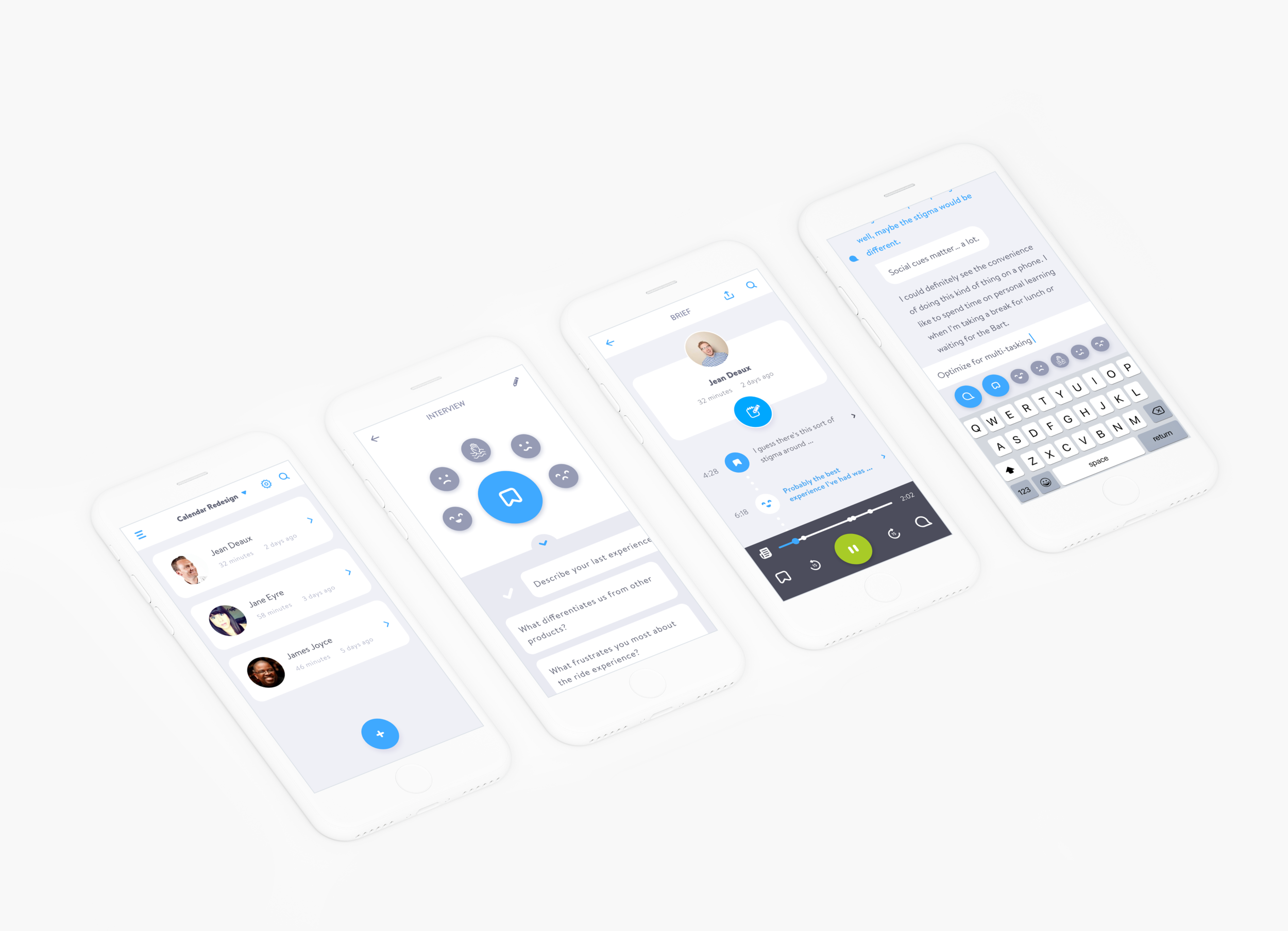
Cassette
An automated mobile note-taking tool to foster better conversations.

A virtual notetaker with real-time transcription that lives on your iPhone – empowering creative professionals to focus on conversations, not notes.


We had dozens of prototypes. We needed to scope the concept down to something viable.
In pursuit of a scalable toolset for teaching design thinking to organizations, I prototyped dozens of features and new ways to learn that we believed could change the game for organizations looking for better ideas.
Two strategic questions had guided our ideation up to this point:
How might we empower creativity for teams in a way that appeals to their business needs?
How might we leverage technology towards a solution that offers novel, scalable, and lasting value?
A third question would guide our go-to-market strategy. If our lean 4-person wanted to launch a product any time soon, we needed to build with disciplined focus:
How might we focus the product's scope on our market's single most compelling need?

Shipping incomplete products is disappointing. Ship effective solutions with increasing complexity & scope to offer value from day one (illustration: Andrew Wilkinson)
Instead of trusting intuition, we trusted our users by doing more testing using prototypes that focused on singular solutions.

I designed a handful of "skateboard prototypes" – MVP concepts with narrow scope that effectively solve a problem for users.
After we found a simple product concept that offered enough value to acquire customers, we could focus on expanding feature offerings.

Finding the right need
Most people I researched with liked lots of MVP concepts. But the difference between an idea and a solution is critical. Products worth building sound less like "Wow this is awesome" and more like "This would change my life ... how can I get this?"
Insights from research guided us to the most meaningful user needs:
Recording user interviews and conversations was a massive pain point.
We discovered that even design teams with massive budgets were misallocating resources, requiring multiple researchers for every user conversation for adequate note taking. Researchers on small teams focused on notetaking at the expensive of the person in front of them. How can you build empathy for another person's problems when you're staring at a laptop screen?
Even suboptimal transcription would change lives.
Users had surprising opinions about transcription. When I showed early prototypes for a tool to record user interviews, many reminisced painfully on transcription services that cost $1/minute and take weeks to get the job done. While we initially assumed machine learning wouldn't be an accurate enough method for transcription, many users disagreed.
"Even if this had transcription that was 50 percent accurate, I'd pay for it right now." –one technologist.

Validating Demand
We found a need worth exploring. But we needed to validate our solution before committing development resources.
I designed and created a website for the concept – complete with UI, marketing copy, and a call-to-action for requesting an invite to the product. We launched on Product Hunt, and posted links on a couple blogs like Designer News.
With no other marketing, we acquired a waitlist of 6,000 people and the #1 spot on Product Hunt. We had hundreds of requests for large enterprise plans. We were ready to start building.

Iterating for a market: design, prototype, test, repeat
Insights about behavior guided the product's design over time.


Results
With no marketing since our launch on Product Hunt, we've seen almost a 10% conversion rate from signup to paid subscription. Some people are using the app 4 or more hours a day at work. Cassette has been featured by Apple on the App Store. While our user base is small, I credit passionate early adoption to solving a need that defines the day to day workflow for many creative professionals.
Role: Founding designer. This role afforded me opportunities to contribute beyond the confines of traditional design roles – effectively wearing the hats of product designer, strategist, researcher, web designer, brand designer, growth marketer and creative director.
